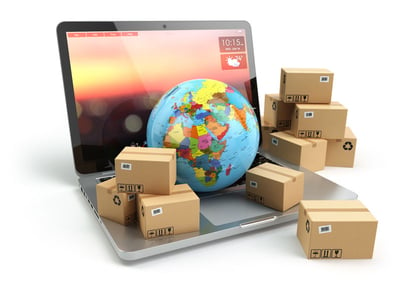Importing into Canada: A step-by-step process
Importing goods into Canada requires attention to detail to ensure that your shipments cross the border quickly and arrive on time. These details include different customs and logistics processes and regulations that you must undertake to ensure compliance and keep your goods moving.
This step-by-step guide walks you through an end-to-end introduction to importing goods to Canada, from confirming that your goods are eligible to post-import duties and responsibilities. Whether you're starting a new importing deal or expanding your business internationally, following a consistent process to import into Canada will help you avoid costly mistakes and ensure your shipments arrive smoothly.Step 1: Make sure your goods can be imported into Canada
Not all products are eligible for import into Canada. There are multiple reasons why imported goods might be inadmissible, so it’s best to double-check that the goods you want to ship into the country will legally cross the border. Start by getting a clear and accurate product description, the country of origin, and the name and address of the manufacturer.
Next, check the Import Control List (ICL) under the Export and Import Permits Act to find out whether the goods are controlled, restricted, or require a special permit. You’ll also need to see if your goods fall under the jurisdiction of one of many Participating Government Agencies (PGAs).
More than 15 PGAs take responsibility for regulating different product types and categories, such as:
- Canadian Food Inspection Agency (CFIA) - regulates food imports, plants, and animals for Canadian consumers
- Environment and Climate Change Canada – regulates materials that impact the environment and climate change
- Global Affairs Canada – regulates and manages controlled goods imported into Canada
- Health Canada - regulates medical devices and consumer products sold in Canada
When goods are regulated by PGAs and other government bodies, you might need special documents or licenses beyond the usual paperwork. In some cases, regulated imports may require specific packaging and labelling to achieve compliance.
Step 2: Classify goods and determine duties, taxes, and tariffs
Before you ship anything, you must correctly classify your goods using the Harmonized System (HS) — an international coding system that identifies products and determines applicable duty rates.
Some of the information you’ll need to provide a correct classification and calculate duties, taxes, and tariffs include:
- Harmonized System code – A HS code identifies your goods for classification purposes and links to tariff rates, duties, and taxes.
- Value for duty – An accurate dollar value provided to customs and used to calculate applicable duties and taxes.
- Determining applicable duties – Depending on the product you’re importing and the country of origin, the amount of applicable duties and tariffs will vary.
- Import taxes – Generally, importers will pay GST and HST, but the amount of taxes paid can change depending on the province you’re located in.
Step 3: Register for an import/export account
You can register for an import and export account through the CARM portal, using a Business Number (BN) provided by the Canada Revenue Agency (CRA). After you’re registered, you should have an import/export program account number that includes your nine-digit BN followed by “RM0001”. Your business will also have a GST/HST account set up.
Step 4: Submit your customs declarations
Customs declaration can be submitted electronically to the Canada Border Services Agency (CBSA) through the appropriate system, most often through the CARM portal. You’ll provide a Commercial Accounting Declaration (CAD) that provides the CBSA with relevant details about the imported goods, such as classification, the value of the goods, and the country of origin.
These declarations can be submitted by importers or by a licensed customs broker that’s acting on behalf of an importer. Once submitted, the CBSA reviews the declaration to assess duties, taxes, and compliance with import regulations. It’s important to note that errors in declarations can cause your goods to be delayed.
Step 5: Determine how you will pay duties and taxes
When your goods arrive in Canada, you’ll need to pay any applicable duties and taxes. Three options for payment methods include GST Direct payments, Direct Security payments, and Customs Broker’s Bonds. Each of these options are meant to facilitate payments for different scenarios.
GST Direct payments don’t require an upfront bond for registered businesses, but the option to defer duties isn’t available. Larger, high-volume importers can opt for Direct Security payments with an upfront bond paid and the rest of the fees reconciliated monthly. Most importers can choose to leverage a Customs Broker’s Bond where the broker pays upfront to facilitate importation with the importer reimbursing their broker.
Step 6: Order your goods and prepare shipping documents
After dealing with the legwork of aligning with various import regulations and responsibilities and registering with the CBSA and the CRA, you’re set up to place an order that should cross the border without any issues. Your chosen vendor should already be familiar and similarly prepared to fulfill Canadian importing requirements and provide the documentation that will be required for the transaction.
- A commercial invoice and packing list
- A Bill of Lading
- A Certificate of Origin if needed
- A Canada Customs Invoice (CCI) if needed
Make sure all documents are complete and match the product details and descriptions before submitting them to customs.
Step 7: Choose the right carrier
The carrier you select will be responsible for transporting your goods across the border. While doing so, they’ll need to submit a Cargo Control Document (CCD) to the BSA. The CCD identifies your shipment and links it to your customs declaration. Using a carrier tracking solution keeps you informed about where the carrier and your shipment are located throughout the delivery.
In addition to choosing a carrier with access to modern Pre-Arrival Review Systems (PARS) and tracking applications, important aspects to consider before selecting the carrier include:
- Transit time and shipping cost
- Their experience with cross-border freight
- Their ability to comply with various regulations and requirements
- The licenses and equipment they have for carrying certain types of goods
CBSA may select your shipment for inspection, so ensure your carrier is organized and transparent. Importers can work with freight forwarders who provide specialized knowledge for shipping goods internationally.
Step 8: Obtain the release of your goods
Your goods must be released by the CBSA before they can enter the Canadian market. To obtain the release for your goods, you can provide the release package yourself or work with a customs broker to manage the release from the CBSA.
Shipments are assigned a 14-digit transaction number that allows CBSA to track and process clearances. Typically, a release package includes invoices, the HS classification code, an import declaration, and proof of duties and taxes paid.
Achieve smooth and efficient imports into Canada
The process of importing into Canada is best approached with a consistent process that covers all the basics. An experienced customs broker can help you with every aspect of importing into Canada, from HS classification to obtaining a release for your goods.
It's also valuable to understand that importing doesn’t end when your goods arrive. Ongoing compliance is essential. You must keep all import records for six years plus the current year. This includes invoices, permits, shipping documents, and correspondence. CBSA routinely audits importers to ensure compliance, so having clear records and accurate documentation protects you from penalties.
Cole International has more than a half-century of experience with companies operating across Canada and the U.S. Let an experienced professional broker handle the crucial details and deliver insight into import tariffs, regulations, and efficient compliance. Connect with Cole today.
Importing. It’s what we do.

Latest Articles
- Watch out for these extra charges on your freight bill
- Key differences between duty drawbacks and duty refunds for importers
- Mitigating container shortages and rising shipping prices for ocean imports
- How Canadian importers benefit from end use tariff codes and conditional relief
- The benefits of operating as a Non-Resident Importer in Canada
